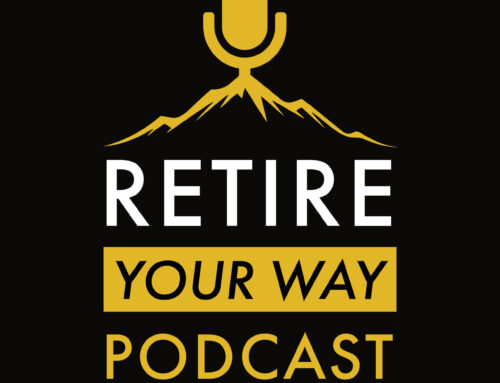 Taxes may be one of your biggest concerns when it comes to retirement. Whether you’re well into your retirement or just starting to think about it, taxes can be one of the main factors in maximizing your savings to stretch all the way through retirement. The Roth IRA can be a great investment vehicle for tax-free income after reaching retirement age.
Taxes may be one of your biggest concerns when it comes to retirement. Whether you’re well into your retirement or just starting to think about it, taxes can be one of the main factors in maximizing your savings to stretch all the way through retirement. The Roth IRA can be a great investment vehicle for tax-free income after reaching retirement age.
The main benefit of the Roth IRA is that it is a tax-advantaged investment vehicle. However, there are penalties for misusing it. To avoid penalty fees, aim to take Roth IRA distributions after age 59 ½ when withdrawals are tax-free and penalty-free. Watch out for the five-year holding period in which you’re required to hold your investments in the account for five years before withdrawing, regardless of how old you are. Also, because the Roth IRA doesn’t defer taxes, you want to make sure that you contribute to a Roth IRA in years when you are in a comparatively lower tax bracket. A Roth IRA can benefit from compounding interest too, so in some cases the earlier you start the better.
You might also be wondering how Roth IRAs differ from traditional IRAs. Well, your contributions to the traditional IRA are made pre-tax, which means that your contributions to the IRA are not counted as taxable income for your current year but are taxed at your income rate in the future year you decide to take withdrawals. Contrarily, state and federal taxes are paid during the year of contribution for Roth IRAs. It’s also important to know that both traditional and Roth IRAs have yearly contribution limits of $6,500, and the Roth IRA has an annual income limit for regular contributions that phase from $138,000 to $153,000. If your income is in, or above this range, you may have limited or no access to the Roth IRA through regular contributions.
In terms of strategy, the optimal Roth IRA strategy is to contribute to an account as soon as possible and to do so while you are in a lower tax bracket. For many, this financial profile characterizes them in the early stages of their careers. If you start or have started young, it will give you a longer runway for the tax-free compound growth of your account, given that contributions were subject to your lower tax rate.
However, the Roth IRA isn’t only for young income earners. You can perform a backdoor Roth conversion which transfers funds from a retirement account into a Roth IRA. Talk to your financial advisor to see if you can transfer your holdings from a traditional IRA to a Roth IRA. However, watch out for the five-year holding period that applies even after you turn 59 ½ years old. Any withdrawals before that five-year holding period will be subject to the early withdrawal penalty fee.
Utilizing a Roth IRA and a traditional IRA together can be advantageous in a comprehensive tax minimization strategy. But a great plan may not work unless it’s executed according to your unique financial situation. An advisor can look at your whole financial situation and help guide you in the right direction when it comes to how you use the tools available. So, contact us at (540) 720-5656 to get started with one of our financial advisors.








 Amy Anderson joined the ILG Financial team in 2023 as the client relations coordinator. Her responsibilities include scheduling of appointments, annual check-up notifications, and annuity and required minimum distribution assistance. She is a graduate of Harding University with a degree in Computer Information Systems. Amy and her husband have two children and she enjoys reading, crocheting, music and spending time with her family.
Amy Anderson joined the ILG Financial team in 2023 as the client relations coordinator. Her responsibilities include scheduling of appointments, annual check-up notifications, and annuity and required minimum distribution assistance. She is a graduate of Harding University with a degree in Computer Information Systems. Amy and her husband have two children and she enjoys reading, crocheting, music and spending time with her family. Chase Lopez joined the ILG Financial team in 2020 as an advisor. Chase is a 2016 James Madison University graduate with a degree in management. Chase has been trained under the tutelage of Dave Lopez, who is not only the founder and managing member of ILG Financial, but also is Chase’s uncle and godfather. He also enjoys working alongside his cousin, Megan, who is Dave’s daughter. Chase, as a fiduciary, believes in putting his clients interests first, and building out plans for his clients where they can have a happy and fruitful retirement. He married his beautiful wife in February 2022 and both use most of their free time chasing around their little pup, Aurora.
Chase Lopez joined the ILG Financial team in 2020 as an advisor. Chase is a 2016 James Madison University graduate with a degree in management. Chase has been trained under the tutelage of Dave Lopez, who is not only the founder and managing member of ILG Financial, but also is Chase’s uncle and godfather. He also enjoys working alongside his cousin, Megan, who is Dave’s daughter. Chase, as a fiduciary, believes in putting his clients interests first, and building out plans for his clients where they can have a happy and fruitful retirement. He married his beautiful wife in February 2022 and both use most of their free time chasing around their little pup, Aurora. Jessica Carson joined the ILG Financial team in 2018 as an agent. Jessica and her husband have four children, two dogs, 3 barn cats, 5 chickens, and three parakeets. She indeed loves her children and pets! When not at work, Jessica enjoys playing the piano and cello as well as traveling and spending time outside with her family, hiking, fishing, and boating.
Jessica Carson joined the ILG Financial team in 2018 as an agent. Jessica and her husband have four children, two dogs, 3 barn cats, 5 chickens, and three parakeets. She indeed loves her children and pets! When not at work, Jessica enjoys playing the piano and cello as well as traveling and spending time outside with her family, hiking, fishing, and boating. Terri Center joined the ILG Financial team in 2019 as client services manager. She handles client records, application processing, and gathering information to provide a professional and friendly experience with all of our clients. Terri is a graduate of Oakland University. She is married and has two children. She enjoys hiking, family time, and puzzle challenging video games. She also likes to share her creativity in her canvas paintings and sewing projects.
Terri Center joined the ILG Financial team in 2019 as client services manager. She handles client records, application processing, and gathering information to provide a professional and friendly experience with all of our clients. Terri is a graduate of Oakland University. She is married and has two children. She enjoys hiking, family time, and puzzle challenging video games. She also likes to share her creativity in her canvas paintings and sewing projects. Megan Jones joined the ILG Financial team in 2020 as marketing director. Megan and her husband live in Fredericksburg, VA with their German Short Haired Pointer, Gus. Megan is a graduate of Longwood University and holds a degree in communications. Megan is the oldest of Dave Lopez’s three children and not only enjoys working alongside her father, but also with her cousin, Chase, who joined the ILG Financial team in 2020 as an advisor. When not at work, Megan enjoys sitting on the back porch with family and friends enjoying food and music.
Megan Jones joined the ILG Financial team in 2020 as marketing director. Megan and her husband live in Fredericksburg, VA with their German Short Haired Pointer, Gus. Megan is a graduate of Longwood University and holds a degree in communications. Megan is the oldest of Dave Lopez’s three children and not only enjoys working alongside her father, but also with her cousin, Chase, who joined the ILG Financial team in 2020 as an advisor. When not at work, Megan enjoys sitting on the back porch with family and friends enjoying food and music.